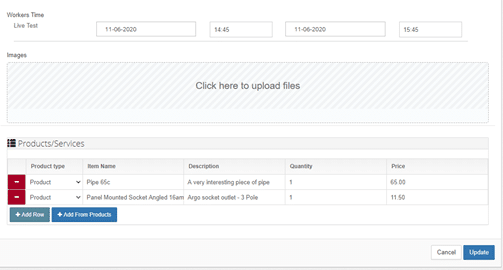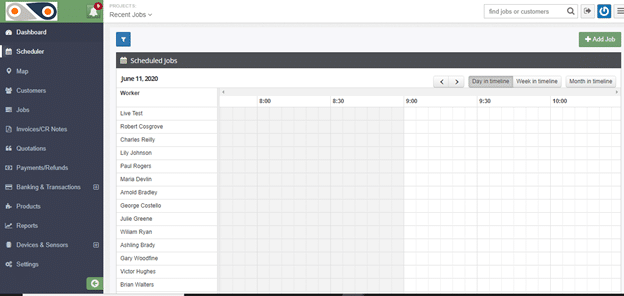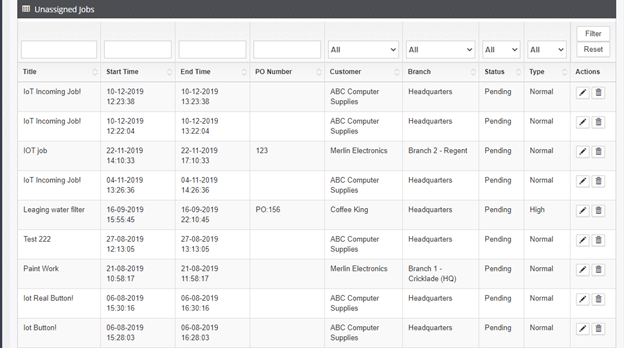A mobile workforce management software is key to managing an efficient field workforce.? Managing a staff of people can be tricky in any industry. Try keeping track of employees on shifting jobsites, many whom are paid hourly or temporary workers. The added pressure of ensuring the right workers get to the right sites at the right times, but they also need to track hours, parts used, vehicles and equipment assets.
In a previous post, we defined what is an operational review and why they play a key process in the continual evolution of successful businesses.?
Operational reviews allow the organization members to evaluate their performance, according to the procedures, resources properly, timescales and budgets.
In this post, we’ll take a closer look at how to implement an operational review and the steps typically undertaken to help you and your organisation to implement an operational review.
What the steps in a Operational Review Process
There are typically six steps in an operational review that range from preparatory work conducting interviews and collecting documents to the presentation of the final written report.
An audit should be customized to meet a organisatons specific needs, so standard steps can and should only serve as a guideline.? Management and internal and external auditors should adjust the process to address the company’s particular goals and objectives.
Initial Management Meeting
Understanding the problem is the first crucial step of an operational review. This is one of major areas of discussions when the audit team meets with the management, and department heads will be asked to identify any specific areas of concern. Once the problem is identified, it would be easier to come up with workable solutions.
Conduct Interviews
The next step in the evaluation is carried out with experienced teams doing interviews and keeping close observation. Each team essentially watches how employees carry out their responsibilities. This is considered a key part of the process.
When doing the interview, it is also vital that the observing team gains the employees? trust and confidence. Likewise, the staff must be assured that whatever transpires between the team and the employee will be kept confidential. Management must therefore guarantee anonymity to anyone who offers critical information, lest employees withhold vital information and render the data gathered inaccurate.
Systems Review
Employees and management practices will be reviewed by the assessing team according to the standard policies and guidelines of the company. The effectiveness of the controls in place as well as their appropriateness to the current operating conditions will also be evaluated.
Reporting
A documentation of the data gathered and the assessment of the evaluating team, will be submitted to the management after the review process. Flow charts and written narratives of departmental activities are usually part of this report. This is also where observations and recommendations of the team will be presented to the department heads concerned.
Review Results
While the operational review is being conducted, it is important to take into account the vital factors that affect the company: the people, processes, procedures, and strategies. These four factors can determine the company?s progress in the future.
Key Areas of focus in operation reviews
At a minimum an operational review should include the following key ares of assessment
Management Control
Responsibilities, authority, and the scope in which an employee has the freedom to act must be clearly defined and documented. A complete and specific job description for instance, would give the employee a clear perspective on how he acts and functions within the company.
Boundaries should be set not only to benefit the employer but more so the employee as well.
Moral and Ethical Guidelines
Moral and ethical guidelines are just as important to ensure for a smoother employer?employee relationship. Otherwise, personal issues such as work ethics, work attitude and personal values may post problems in the long run if such guidelines are not drawn properly before relationships are established.
Processes and procedures
Evaluating processes is only beneficial if the company itself updates its processes and procedural manuals regularly, or at least when needed. Such protocols may need revision and some steps may be obsolete already. Improving a company?s processes and procedures doesn’t always entail cost. In fact, improvised procedures may even be cost-effective and could make the processes more manageable.
Communication and reporting standards
Gaps in communication could result in serious lapses in internal controls, putting the company and/or its assets at risk. This is where the importance of timely and clear communication comes in. Likewise, reports must be useful, and the flow of information and how it is processed must keep pace with the company?s growth.
Information technology (IT) and security controls can also be included under the communication clause. Proper IT security policies must be in place, state-of-the-art protection techniques employed, and everything be documented, periodically updated, and continually monitored.
Strategic planning and tactics
No company can ever be complete without its strategies. It would unwise for any organization to proceed without first knowing where it stands and what direction it wants to take. Strategic planning draws such a map. It must be aligned to the mission and vision of the company, and should also coincide with the organizational goals set. Strategic planning deals with these three key questions:
- What do we do now
- Whom do we do it for?
- How can we overcome competition
Without clear strategic direction, expectations would likely differ between ownership and management.
Contingency planning, testing and recovery
Contingency plans must be up-to-date, and are essential to the organization. If one course of action fails, the company should have plan B, C and so on. In addition, an organization should be prepared to respond to interference’s.
This includes establishing a formal process to review transactions processing during both disruption and recovery.
Presentation of Report
Based on your objectives and our findings, we will develop detailed recommendations to improve your company?s performance and productivity. Our written report will include a list of both short-term and long-term projected improvements and courses of action, to be mutually agreed upon by both parties.
To ensure the achievement of the improvements we outlined, our team will also assist in the implementation of these modifications.
The plan has three levels of recommendations: one for executives, another for management, and a third one for staff.
The executive summary concentrates on your company?s strengths, weaknesses, opportunities and threats to its entirety. It includes recommendations for any needed changes in policy or governance.
The management plan is based on employee feedback and includes areas of immediate improvement as well as identification of potential problem areas. Concerns from the bottom level management can now be forwarded to the top level management in formal writing. Better working relationships may evolve from this, thereby setting the work environment for a higher productivity ratio.
Lastly, the staff report deals with topics like charting the hierarchy of the organization, and discussing in detail specific control objectives that are critical to the company?s mission. Part of our goal is to encourage personnel to pay close attentions to such changes, if any, as these efforts are essential if they want to bring about both organizational and personal success.
If you would like to further discuss how our operational review services can benefit your company, please feel free to contact us at your convenience to schedule an initial consultation. We?ll be more than happy to assist you.
More Operational Review Blogs
Carrying out an Operational Review
Operational Reviews
Operational Efficiency Initiatives
Operational Review Defined
Contact Us
- (+353)(0)1-443-3807 – IRL
- (+44)(0)20-7193-9751 – UK





